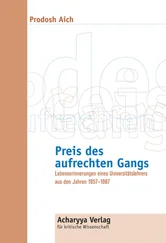The massage to be transported is that the “short-statured” persons are not just “not tall”, but they are also “incalculable and mischievous”; dark-skinned people are in fact “shady customers”, not so frank and open as fair skinned people. And if they have dark eyes in addition, who would like to encounter them? Being citizens or not, who would seriously think about integrating them into the “we-group”? A culture, which has generated the consciousness of superiority of the „blond-blue-eyed-white“ people for centuries, must also be named accordingly, and we should not any longer accept that “experts on culture ” confuse us by inventing new labels for this culture. The “Aryans” could not have been Christians. Christianity emerged later. But who are the “Indo-Europeans”? Are they only the Christian descendants of the “Aryans” or also products of the blond-blue-eyed-white-Christian culture? Are they not more civilised than the “Indo-Aryans”? And a little superior too?
And superiority is not superiority if it is not constantly scrutinised and being evidenced. This can be observed when physical violence is used against those fellow-habitants in Europe, in “America”, in “Australia”, in "New Zealand", who obviously do not belong to the “blond-blue-eyed-white-Christian” culture. And in Germany, of course. Why do we have the public appeals of the celebrities against the infringements? Is it more than just “celebrating”? It should be added that all pioneers of this culture have not necessarily to be “blond-blue eyed-white-Christian”. We have not forgotten yet that Adolf Hitler or Josef Goebbels were the prototype of Nordic “Aryans” in Germany for a “thousand years”. There should not be any misunderstanding. We, the authors, also belong to this culture, although we lack those basic features; but we cannot extinguish the internalised “values” either.
But let’s get back to the original “Aryans” who are supposed to have instigated the whole affair. They were rather simpletons, who ‘ were warriors of a youthful group of herdsmen, who did already some farming, but knew nothing of town planning and of fine artistic work ’, but nonetheless ‘ immigrated through the mountain route of the Northwest into the watershed of Indus and subjugated in continuous fight the prior residents of the north-west corner of India in the 2nd millennium BC ’. They just ‘ were warriors of a youthful group of herdsmen ’. That was it. We wanted to know in which period all these things happened. But there is no concrete evidence. And what about the expansion of this culture up to the utmost southern part of this area? When did it happen? Since the time of Vardhamana, the first Mahavira of the Jainic teaching and Siddhartha Gautama, the later Buddha, the history of India is well documented. There is no evidence of any “Aryan” invasion, occupation and spreading of the culture into the diminished “land of the Dravidians” in the south of India. Apparently this must then have occurred in the period between the 15th and 7th century BC. Why it was not reported in the extensive literature of the “Sanskrit-Aryans”? There is not even the smallest reference.
Even if we bought the story of the “population explosion” among the grazing nomads, we should have to wonder about the section of population which would be ready for a collective emigration: The “well established” ones or the “inferior” ones? Let's consider this dichotomy of the entire population for a while. Which of these two parts would foster the common language better: the established ones or the inferior ones? Who is inclined to emigrate? If, therefore, the “Aryans” brought “Protosanskrit” to India, must we not assume that those remaining at home spoke the same “Protosanskrit”? If the “Aryans” abroad produced that abundance of Sanskrit literature, shouldn’t the same “breed” also have produced literature at home? May be not in abundance and in good quality? But some literature anyhow? Where is the literature of the “Aryans” at home? Where is their history? And why didn’t the other “Aryan” emigrants, the Greeks, the Romans, the Germans and the Celts, produce literature similar in quality to “Sanskrit literature”?
Then we would like to know how “modern historians” were able to acquire their knowledge. What were the sources of all these stories which are being ladled out even today? In that exemplary German “standard history book” of 1998 we get a hint about the quality of their sources on page 49: “ The dating of the texts and the cultures that produced them was vigorously disputed for quite a long time also among western Indologists. Based on astronomical information the famous Indian freedom fighter Bal Gangadhar Tilak has published in his book «The Arctic Home in the Vedas» at the beginning of this century his belief that the origin of the Vedas was to be backdated to the 5th and 6th millennium BC. The German Indologist H. Jacobi came independently to similar conclusions and dated the beginning of the Vedic period in the middle of the 5th millennium. Mostly one followed, however, the dating set by the famous German Indologist Max Mueller who taught in Cambridge in the late 19th century. Setting out from the lifetime of the Buddha around 500 BC he dated the origin of the Upanishads in the centuries from 800 to 600 BC as the philosophy in them had originated before Buddha’s deeds. The Brahmana– and Mantra texts preceded these in the centuries from 1000 to 800 respectively from 1200 to 1000 BC. Today one dates the oldest Vedic text, that of Rigveda, into the middle of the 2nd millennium BC. Since the Vedas soon after this genesis as a divine manifestation were not allowed to be changed anymore and handed down to our contemporary time by priest families verbally in an unbelievably precise manner, they can now be considered, after their dating can be regarded as being fixed at least in specific centuries, as historical sources of first rank for the history of the vedic society in northern India .”
Isn’t it impressive, the sheer style of this writing? The section: “Immigration and Settlement of Aryas”, yes, in fact the whole book is written in the same impressive style. And it is so convincing! It has exemplary “scientific” quality. Each sentence, each paragraph is convincingly presented. The book, from the first to the last word, is a demonstration of the scientific quality of the “Humanities”. Who can still have doubts about its contents? The most important principle of thisscience is to convince others. No, not exactly, not to convince. The principle is to make believe. The weak points are, wherever possible, packed in insignificant portions. And the debatable points, which might lead to criticism, are touched on, signalling that those aspects have been recognised, but could not be dealt with in detail due to the lack of space. Right?
At the beginning of the “modern humanities”, we suppose, it was more difficult “to make others believe”. But today the means of manipulation are almost perfect. It is not that the scientists of our time have become cleverer and packed their messages slyly. No, that’s not the way. We are more and more losing our ability to recognise manipulations. This begins in the family. Applying the power principle. The main thing is first to assert oneself. It doesn’t matter by which means. Hypocrisy is the trump card. This principle of exercising power and applying hypocrisy continues to be practiced at school, on the job, in the subcultures and finally takes control of the entire culture. The mass media always play a major role. Nothing depends on the actual truth. Whatever is sold becomes truth. The logic is primitive but effective. The people wouldn’t buy it if it was not true, would they? Have we already forgotten the media report on the “Gulf war”, “Kosovo – air strikes” and “Afghanistan – crusade”? And the bombshells enriched with uranium?
Читать дальше












